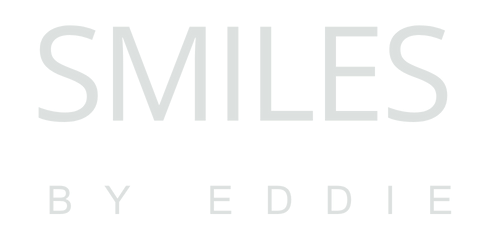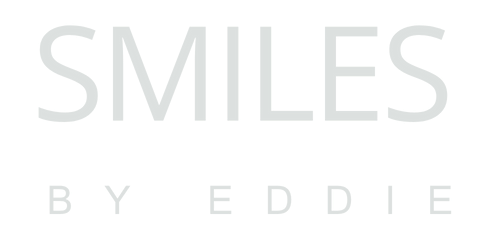Bone grafts are surgical procedure designed to rebuild or augment bone in the jaw where it has been lost or is insufficient. The jawbone plays a crucial role in supporting your teeth and, if missing, dental implants. When teeth are lost, the jawbone in that area can naturally resorb or shrink over time due to lack of stimulation. Gum disease, trauma, or certain medical conditions can also lead to bone loss.
During a graft, I introduce bone grafting material to the deficient area. This material acts as a scaffold or a framework, encouraging your body’s natural regenerative processes to grow new bone cells. Over several months, your body will gradually replace the grafting material with your own healthy, natural bone, creating a stronger and more substantial foundation. For residents of Woodland Hills and the surrounding San Fernando Valley, our grafting procedures are a critical step in preparing for successful dental implant placement or enhancing overall jaw stability.
Hello there, I’m Dr. Edmond Ahdoot, and at Smiles By Eddie, my commitment is to ensure the long-term health and stability of your smile. Sometimes, due to tooth loss, gum disease, or trauma, the jawbone that supports your teeth or future dental restorations can deteriorate.
When this happens, a bone graft becomes a vital procedure to regenerate lost bone, create a strong foundation, and allow for successful treatments like dental implants. My team and I are dedicated to providing precise, compassionate bone grafting procedures right here in Woodland Hills, helping you achieve the strong, healthy foundation needed for a lasting smile.
Why Might I Need a Bone Graft?
Bone loss in the jaw is a common issue that can impact your ability to receive dental implants, affect the stability of adjacent teeth, and even alter your facial structure over time. During your comprehensive examination at my Woodland Hills dental office, I will use advanced imaging (like 3D cone-beam CT scans) to accurately assess your bone density and determine if it is necessary.
You might need a bone graft for reasons such as:
- Dental Implant Placement: This is the most common reason. To successfully place a dental implant, there must be sufficient bone volume and density. If bone has been lost after tooth extraction, a graft prepares the site for the implant.
- After Tooth Extraction (Socket Preservation): When a tooth is extracted, a socket preservation graft (also known as ridge preservation) can be placed immediately into the empty socket. This helps prevent the rapid bone loss that typically occurs after an extraction, preserving the ridge for future implant placement or to maintain facial contours.
- Gum Disease (Periodontitis): Advanced gum disease can destroy the bone supporting your teeth. Bone grafting can be used in conjunction with periodontal therapy to regenerate some of this lost bone and stabilize teeth.
- Bridging Large Gaps (Ridge Augmentation): If you’ve had missing teeth for a long time, the jawbone can shrink significantly, creating a narrow or collapsed ridge. Ridge augmentation grafts rebuild the bone volume to make the area suitable for implants or to improve the aesthetics for a dental bridge.
- Sinus Lift Procedure: When upper back teeth are lost, the maxillary sinus (an air-filled cavity above the upper jaw) can expand downwards, leaving insufficient bone for implants. A sinus lift graft gently raises the sinus floor and places graft material into the space to create new bone.
- Trauma or Injury: To repair jawbone defects caused by accidents or injuries.
- Cosmetic Enhancement: To restore lost facial bone structure that may have led to a sunken appearance.
Types of Bone Graft Materials We Use
Various types of bone graft materials are available, each with specific advantages. The choice of material depends on the extent of bone loss, the location of the graft, and your individual needs. I will discuss the best option for your case.
Autogenous Bone Graft (Autograft): This is considered the “gold standard” as it uses your own bone (e.g., from your jaw, hip, or tibia). It has the highest success rate because it contains living bone cells, which enhance bone growth.
- Benefits include: Best regenerative potential, no risk of disease transmission or rejection.
- Considerations: Requires a second surgical site for harvesting.
Allogenic Bone Graft (Allograft): This material comes from a human donor (cadaver bone) that has been processed to be safe and sterile. It acts as a scaffold for your own bone to grow into.
- Benefits include: No need for a second surgical site, readily available.
- Considerations: Excellent safety record due to stringent processing.
Xenogenic Bone Graft (Xenograft): This bone material comes from an animal source, typically bovine (cow) bone. Like allografts, it is processed to be sterile and safe and serves as a scaffold for new bone growth.
- Benefits include: No need for a second surgical site, widely used and effective.
- Considerations: Excellent safety record due to stringent processing.
Alloplastic Bone Graft (Synthetic): These are synthetic bone graft materials, often made from biocompatible ceramics (like tricalcium phosphate or hydroxyapatite) or polymers. They also act as a scaffold.
- Benefits include: No human or animal source, unlimited supply, biocompatible.
- Considerations: May integrate more slowly than other types.
In some cases, I may also use Growth Factors (like Platelet-Rich Fibrin – PRF) derived from a small sample of your own blood, which can be combined with graft materials to accelerate and enhance bone healing.
DR. EDMOND
AHDOOT
For Your Bone Graft?
Bone grafting is a delicate procedure that requires precision, surgical skill, and a deep understanding of bone biology. Here’s why patients in Woodland Hills, CA, and the surrounding San Fernando Valley, trust Smiles By Eddie for their bone grafting needs:
- Surgical Expertise & Experience: I have extensive experience in performing various bone grafting procedures, from simple socket preservation to more complex ridge augmentation and sinus lifts. My meticulous approach ensures optimal placement and successful integration of the graft.
- Advanced Diagnostics & Planning: We utilize cutting-edge 3D imaging (CBCT scans) to accurately assess your bone structure and precisely plan your bone graft, leading to predictable and effective outcomes.
- Patient Comfort & Sedation Options: I understand that surgical procedures can cause apprehension. My team and I prioritize your comfort, using effective local anesthesia and offering a range of sedation options to ensure a gentle and stress-free experience.
- Focus on Long-Term Success: My goal is to create a robust and stable bone foundation that supports your oral health for years to come, especially for the successful placement of dental implants.
- Sterile & Modern Environment: Our Woodland Hills dental office maintains the highest standards of sterilization and is equipped with advanced surgical tools, ensuring a safe and efficient procedure.
- Comprehensive Care & Follow-Up: I provide detailed pre- and post-operative instructions and continuous monitoring of your healing, ensuring you have all the support needed for a smooth recovery and successful bone regeneration.
- Trusted Local Provider: Located conveniently in Woodland Hills, we are your local choice for specialized dental procedures, offering reliable and compassionate care close to home.

Receiving a bone graft is a surgical procedure performed with meticulous care in our Woodland Hills dental office. While the specific steps can vary depending on the type and location of the graft, here’s a general overview of what you can expect:
- Initial Consultation & Planning: Your journey begins with a thorough examination, including advanced imaging (such as a 3D CBCT scan), to accurately assess the extent of bone loss and plan the exact grafting procedure. We’ll discuss the best graft material and technique for your needs.
- Anesthesia: On the day of your procedure, I will administer local anesthesia to ensure the surgical site is completely numb. For patients who feel anxious, we offer various sedation options to ensure your comfort and relaxation throughout the procedure.
- Incision: A small incision is made in the gum tissue to expose the underlying jawbone.
- Graft Placement: The chosen bone graft material (and potentially a membrane to protect the graft and guide bone growth) is carefully placed into the area where bone regeneration is needed.
- Suturing: The gum tissue is then gently re-positioned and secured with sutures to cover the grafted site and promote healing.
- Post-Operative Instructions: Before you leave, my team will provide detailed verbal and written post-operative care instructions. This will cover how to manage discomfort, what to eat, how to keep the area clean, and any necessary medications (e.g., antibiotics, pain relievers).
- Healing Period: Bone grafts require a significant healing period for the new bone to integrate and mature. This typically ranges from 3 to 9 months, or sometimes longer, depending on the graft type and the amount of bone needed. During this time, the graft material is gradually replaced by your own natural bone.
- Follow-Up & Assessment: We’ll schedule follow-up appointments to monitor your healing progress. Once sufficient bone regeneration has occurred, we will proceed with the next phase of your treatment, such as dental implant placement.
FAQ
Is a bone graft painful?
With effective local anesthesia, you should not feel any pain during the bone graft procedure itself. Some discomfort, swelling, and bruising are normal after the surgery and can be managed effectively with prescribed pain medication and over-the-counter relievers.
How long does it take for a bone graft to heal?
The healing time for a bone graft varies significantly depending on the type and amount of graft material used, as well as individual healing capabilities. It typically ranges from 3 to 9 months, during which your body integrates the graft and produces new natural bone.
What can I eat after a bone graft?
You will need to stick to a soft diet for the initial healing period (often a few weeks) to avoid putting pressure on the grafted area. Avoid hot, spicy, or crunchy foods. I’ll provide specific dietary instructions.
Will I have swelling or bruising after the procedure?
Yes, some swelling and bruising in the area are common after a bone graft. Applying ice packs intermittently for the first 24-48 hours can help reduce this. Swelling usually peaks around 2-3 days and gradually subsides.
What types of bone graft materials are there?
We use various types, including your own bone (autograft), processed human donor bone (allograft), animal bone (xenograft, typically bovine), and synthetic materials (alloplastic). I will discuss the best option for your specific needs.
Is a bone graft always necessary before dental implants?
No, not always. If you have sufficient natural bone density and volume, a bone graft may not be needed. However, if there’s been significant bone loss, a graft is crucial to ensure the long-term success and stability of the implant.
Are bone grafts safe?
Yes, bone grafting procedures are very safe when performed by an experienced dental professional. All donor and synthetic materials undergo rigorous processing to ensure sterility and safety.
What should I do if my sutures come out too early?
If your sutures come out prematurely, contact our Woodland Hills office immediately. It’s important to keep the surgical site clean and protected.
Are bone grafts covered by dental insurance?
Coverage for bone grafts varies widely by dental insurance plan. It’s often covered if it’s considered medically necessary for a restorative procedure like dental implant placement. My team will help you understand your specific benefits and provide an estimate of costs.
What factors affect the success of a bone graft?
Success depends on various factors, including your overall health, adherence to post-operative instructions, oral hygiene, and whether you smoke. Smoking significantly reduces the success rate of bone grafts and implants.
